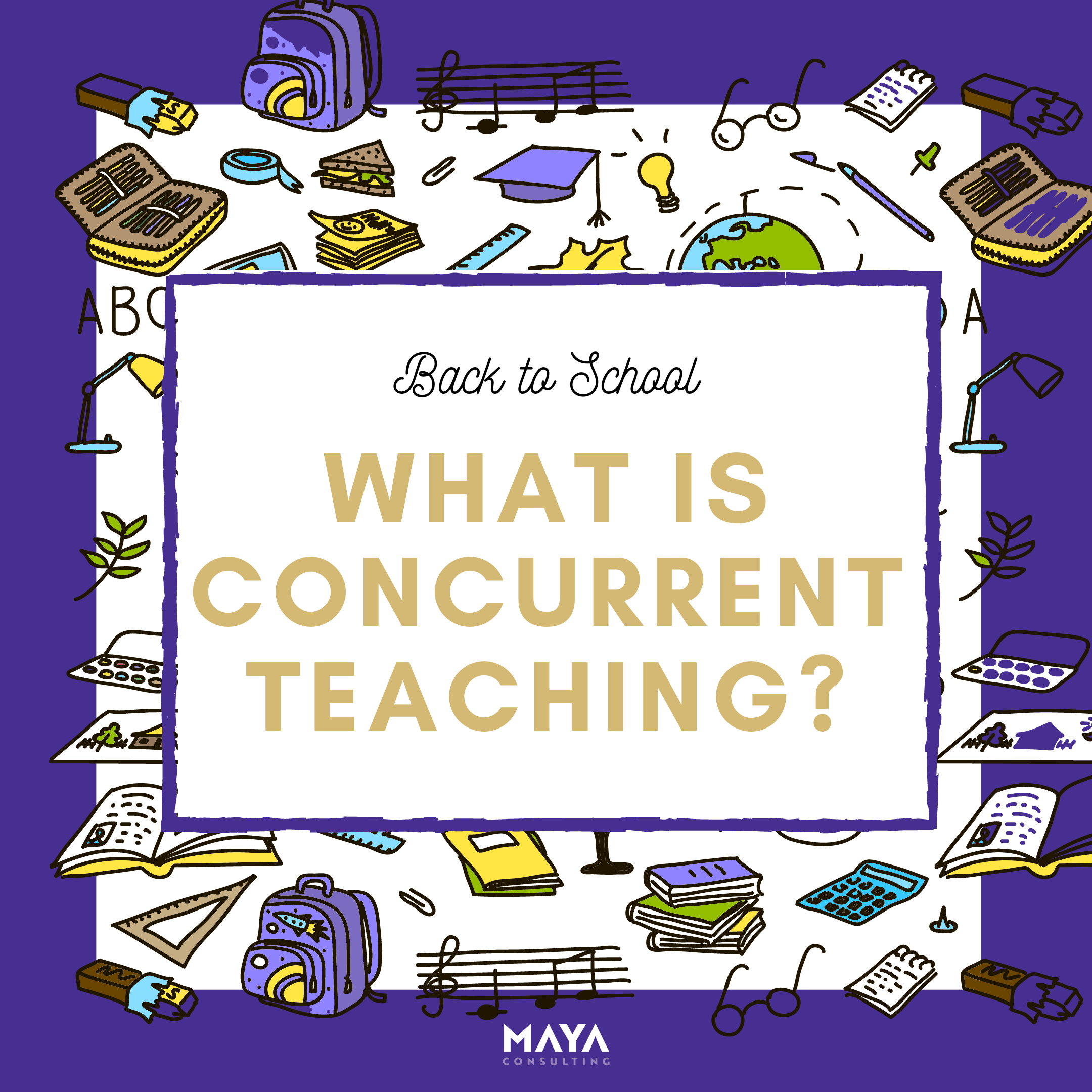Most school districts are planning for one of three different learning scenarios this fall:
- In-Person or On-Campus Learning
- Virtual Learning
- Hybrid Learning – a mix of virtual and in-person instruction
These scenarios include options for synchronous instruction and asynchronous instruction but there is another learning option that has not received as much buzz, that some districts and schools are choosing–concurrent teaching. This approach , also known as the HyFlex model, is delivering instruction simultaneously for students in-person, on campus and virtually, at home. Concurrent teaching might be used for a few grades, an entire school, or as a part of a hybrid learning model. Districts like MAYA client Trimble County Schools in rural Kentucky are working to incorporate concurrent teaching into their fall planning and implementation. Some districts are choosing this learning model due to a lower number of confirmed COVID-19 cases in their county, a smaller amount of parents choosing distance learning, or fewer staff and resources available to divide between in-person and virtual instruction.
The Challenges of Concurrent Teaching
The ability to pull off concurrent teaching relies heavily on both students and staff having the necessary technology and internet access for learning. At a minimum, teachers need a computer or a video camera to live stream or record themselves teaching. Students need access to reliable wifi and a device to watch and participate in the live instruction. Most schools are choosing an online learning management system (LMS) or platform, like Google Classroom, to house teachers’ videos and accompanying student practice materials. Virtual learners might inevitably face more distractions at home, have technology issues, or feel left out of the classroom conversation. Teachers may notice and tend to in-person students more and naturally focus their attention on them.
Concurrent Teaching Benefits
If the technology challenge is overcome, there are many benefits to concurrent teaching, such as in-person and virtual students having the same teacher with that teacher only having to plan for one lesson delivery as opposed to two (in-person and virtual). This method provides one “classroom” community, allowing virtual students to participate in real time with their in-person peers to provide connection and build culture.
How can concurrent teachers maximize engagement and equity for virtual learners?
Three way to utilize concurrent teaching today:
- Peer-to-peer accountability. Indiana University’s School of Education suggests that a way to empower students is through incorporating a “buddy system” and “interactive groups” with a mix of online and virtual students. Imagine a classroom where a 5th grader at home has a question about fractions and messages their in-class buddy. The buddy then raises their hand to let the teacher know that their virtual buddy needs help.
- Modify the lesson structure. In order to maximize student practice time, teachers could tweak their typical lesson structure. For example, perhaps teachers may choose to pre-record their direction instruction to allow more class time to engage with just the virtual students. In-person students could view the direct teach during the first 10 minutes of class while the teacher checks-in with the virtual learning students who had already watched the lesson the night before. As Ted Ladd from Entrepreneur Tech advises in Forbes, “As a rule of thumb, any monologue that persists for more than two slides or five minutes should be pre-recorded.” Dedicating more time for students to practice would enable the teacher more time to respond to ALL students’ questions and to provide feedback. Additionally, more interactive time provides teachers with more opportunities to praise students, pulse check their social-emotional well-being, and cultivate the critical student-teacher connection and relationship.
- Innovate. Whether teachers are looking for how to use a document camera with Google Meet or how to use an interactive whiteboard, the internet is filled with free tutorials and sites dedicated to helping teachers integrate more technology into their lessons to authentically interact with students virtually in real time. A professional development idea is for teachers to pick one YouTube tutorial on their own, select their favorite new “tech teaching strategy” to incorporate in their classroom, and then practice that strategy by teaching other staff, thus adding new tools to everyone’s “teacher tool box.” Allow teachers time to fail quickly, ideally with their own children, or with a small group of student volunteers, in-person and virtual, during dry run rehearsals of this new teaching method.
Progress Not Perfection
As with any learning scenario, there are several moving parts and new skills with “concurrent” instructional delivery that teachers, parents, and students are being asked to learn quickly. The best leaders are ensuring that everyone has time to practice, practice, practice before the first day of school.
Trimble County Schools has hosted a “Google Classroom office hours” for their teachers to share best practices and get questions answered before students return. Purpose Prep, a Nashville charter school, hosted office hours for families and students to provide a technology test run days before school started. Shelby County Schools, in Memphis, hosted three “Stakeholder Orientations” for nonprofits and community service organizations that will be supporting or interacting with families in virtual learning during the school year.
With so many variables and uncertainty this fall, the flexibility that “concurrent teaching” provides is a strategic route to pursue as long as school leaders and teachers are ensuring equity of learning, especially for those students logging in at home. Follow MAYA on Twitter below to learn more about how educators across the country are utilizing this unique learning strategy and more!

MAYA ConsultingMeet MAYA’S New Senior Consultant, Marshall Baker! https://t.co/y6YwPhEGkUhttps://t.co/SLbPWcxYMCJun 9, 2021, 1:32 PM
